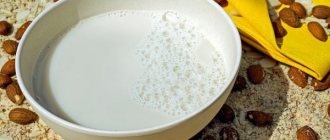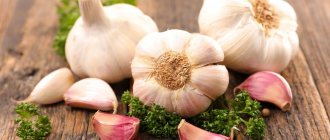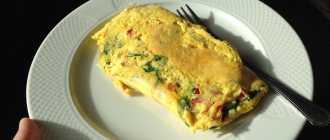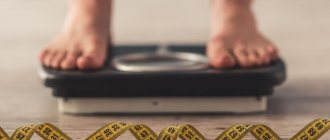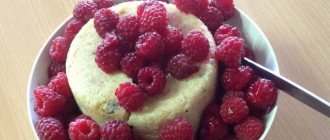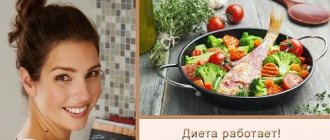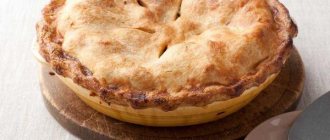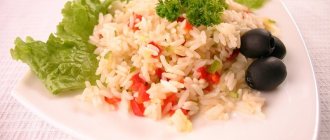Modern nutrition systems are aimed not only at weight correction and maintaining an ideal shape. The decisive factor when choosing a menu is the state of health, improving the quality, harmonious functioning of systems and organs. Intolerance to the milk protein, casein, is often diagnosed in children and adults. A dairy-free diet is prescribed to avoid allergic symptoms and includes an extensive list of products.
Basic principles of a dairy-free diet
The diet of a casein-free diet should be balanced and contain essential nutrients. Refusal of dairy products may be due to the following indications:
- intestinal infections;
- irritable bowel syndrome;
- casein intolerance in infants;
- lactose intolerance in children and adults.
When creating a dairy-free diet menu, you need to consider the basic principles of nutrition:
- daily caloric intake should not be less than 2000 kcal, this norm also applies to nursing mothers;
- the diet should be varied, it is necessary to take into account the balance of fats, proteins and carbohydrates;
- dairy products need to be replaced not only with proteins of animal, but also of plant origin;
- the principles of fractional nutrition are observed, the entire daily volume is divided into 5 servings, calculated in accordance with age standards;
- You need to carefully select products in the store, read the ingredients; products containing lactose and other milk components are prohibited;
- for the normal functioning of the digestive system, replenishing the deficiency of vitamins and minerals, it is necessary to enrich the diet with fruits, vegetables, and vegetable oils;
- It is necessary to comply with the drinking regime, you need to remember that during the hot period the norm for children and adults increases by 2 times.
A dairy-free diet excludes only products of animal origin. You can find a worthy alternative on store shelves:
- rice milk is often used in dietary nutrition, does not contain cholesterol, improves the condition of blood vessels, has a beneficial effect on the heart, glucose is released during the fermentation process, the product tastes similar to cow's milk, but contains a minimal amount of fat;
- almond is rich in vitamins, minerals, helps compensate for the deficiency of calcium, phosphorus, magnesium, contains essential fatty acids, allows you to stabilize weight, improves the condition of the skin, hair, nails, strengthens bone tissue;
- oatmeal contains vegetable protein, fiber, B vitamins, is quickly absorbed, recommended for baby food, is a complete alternative to cow's milk, helps remove cholesterol plaques, normalizes metabolic processes;
- hemp contains essential amino acids, is a leader in antioxidant content, restores intestinal function, and is also recommended for gluten intolerance;
- coconut milk contains vitamins B, C, PP, calcium, magnesium, iron, fiber, strengthens tooth enamel, improves blood count, but is a high-calorie drink and can replace a full meal.
Dairy-free diet for acne
There is an opinion that acne and other rashes appear only in adolescence, but it is wrong
Even as an adult, a person can face such a problem. As practice has shown, most often acne appears from milk .
The fact is that the product contains white sugar . It causes inflammation in the body, which is reflected on the skin as a result. In addition, during the pasteurization process, milk loses beneficial components . As a result, only fats remain, which negatively affect the digestive system.
Unfortunately, not everyone knows that milk causes acne . People mistakenly believe that acne occurs only because of sweets. Therefore, if skin rashes appear, it is worth checking how milk affects the body. Perhaps this is the source of the problem.
Acne on the face
What can't you do on a dairy-free diet?
If an adult's menu excludes only products with lactose, a dairy-free diet for a child has more restrictions. When compiling a diet, you need to take into account the characteristics of sensitization to animal protein. Products with a high allergic potential are prohibited. 15% of children with lactose intolerance are also diagnosed with allergic reactions to other foods.
Authorized products:
- soy-based baby food;
- coconut, almond, soy milk;
- lactose-free cheese, milk;
- biscuits, drying;
- wheat bread;
- oatmeal, buckwheat, rice porridge in water with the addition of vegetable oil;
- lean meats and fish, preferably stewed, boiled or steamed;
- vegetable soups, first courses in a second meat broth with the addition of meatballs or boiled meat;
- green vegetables are recommended to be consumed fresh, orange, red, yellow ones are stewed or steamed;
- the list of fruits is selected individually depending on tolerance and absence of food allergies;
- You can introduce children’s fruit juices and purees into the menu, gradually increasing the serving size;
- eggs are consumed as an omelet without milk or boiled;
- vegetable oils;
- sweets are recommended based on nuts or sesame seeds in limited quantities;
- among drinks, herbal teas without dyes, flavors, compotes, and still water are preferred.
A protein-free diet without dairy products excludes:
- milk, dairy products;
- sausages with added lactose;
- mushrooms;
- white cabbage, turnips, radishes, onions without heat treatment;
- cherries, grapes;
- soda, kvass;
- sauces - mustard, horseradish, ketchup.
When creating a dairy-free diet for children, the allergic potential of foods must be taken into account. A gastroenterologist studies the child’s nutritional characteristics when creating a menu for nursing mothers. Hypoallergenic nutrition will help avoid clinical manifestations of intolerance.
Diet without dairy products - degree of allergenicity of products:
- high degree - eggs, fish, seafood, carrots, sweet peppers, celery, tomatoes, red berries, citrus fruits, nuts, cocoa, chocolate, honey, grapes, mango, pomegranate;
- medium level - red meats, legumes, potatoes, beets, blueberries, black currants, bananas.
Nutritionists do not recommend excluding allergenic foods. The main goal of diet correction is to reduce food sensitization. It is necessary to gradually introduce new products, monitoring any reactions that occur.
Dairy-free diet menu for a child under 1 year old
A dairy-free diet is prescribed to infants with lactose intolerance, as well as with an allergic reaction to casein. Not only dairy products are excluded, but also kefir, cottage cheese, cheese, yogurt, and sour cream. Symptoms may resolve on their own by age three. Lactose intolerance persists throughout life. If breastfeeding is present, pediatricians do not recommend stopping it.
The menu of the nursing mother is adjusted, a dairy-free diet is prescribed, as well as medications for lactose intolerance. It is important to choose the right formula for feeding. If you are allergic to milk protein, use products with protein hydrolyzate or soy based products. If goat milk is digested normally, it can be included in the menu. Lactose-free mixtures are prescribed accordingly for lactose intolerance. Complementary feeding begins at six months of age; the introduction of new products is controlled by a pediatrician.
Scheme for introducing foods to children under one year of age:
- 6 months - vegetable puree is introduced, for the first complementary feeding products with a low allergenicity level are chosen - zucchini, squash, yellow pumpkin; products with a high level of allergenicity are given once a week as an independent dish without additional ingredients;
- from 7 months, water-based porridges are introduced - oatmeal, buckwheat, rice, milk is replaced with a small amount of vegetable oil, gradually expanding the child’s diet;
- 8 months - fruit purees and juices are introduced, you should avoid using fruits with bright colors - strawberries, currants, blueberries, cherries, cranberries;
- 9 months - the menu is expanded to include rabbit and turkey meat; easily digestible animal protein has a low degree of allergenicity;
- at 11 months, combined vegetable soups with meat are used, each new component must be introduced at intervals of a week.
Dairy-free diet for a 1-year-old child daily menu:
- breakfast - dairy-free mixture, tea with fennel;
- second breakfast - apple and pear puree;
- lunch - puree soup from potatoes, pumpkin, zucchini, turkey meat puree, dried fruit compote;
- afternoon snack - oatmeal on water with olive oil;
- dinner - stewed vegetables (broccoli, carrots, zucchini), meatballs with rice and turkey.
The essence of a dairy-free diet for nursing mothers
Milk tops the list of products that most often cause allergies in infants . The negative reaction occurs due to the milk protein casein . So far, scientists have not found an answer to the question of why many people are intolerant to this component.
Infants have an immature digestive system and weakened immunity . This is why women are advised to stop consuming dairy products. Otherwise, babies will have upset stools, red cheeks, bloating, and skin rashes.
Nursing mother
Dairy-free diet menu for a child 2 and 3 years old
Starting from one and a half years, nutritionists recommend introducing kefir. A home-made product is used; if the reaction is normal, the menu is enriched with cottage cheese and milk. The scheme is identical to the introduction of allergen products at weekly intervals. If the reaction to lactose persists, dairy-free nutrition is extended to 3 years.
From the age of two, it is recommended to enrich the diet with proteins of animal origin, represented by seafood, fish, and eggs. Children 2 years old need to include legumes in the diet in the form of pureed purees, these are lentils, beans, soybeans. From the age of three you can prepare first courses with peas and mung bean.
Dairy-free diet for a 2-year-old child menu:
- breakfast - buckwheat porridge, banana puree;
- second breakfast - apple juice;
- lunch - potato and pumpkin soup, chicken cutlet;
- afternoon snack - rice pudding;
- dinner - fish balls, stewed zucchini.
Dairy-free diet menu for a 3-year-old child:
- breakfast - oatmeal with honey, dried fruit compote;
- second breakfast - baked apples;
- lunch - soup with beans and tomatoes, stew with broccoli and turkey;
- afternoon snack - salad with grated pear and carrots;
- dinner - mashed potatoes, stewed veal.
Sample menu of a dairy-free diet for weight loss
The fight against excess weight is one of the main reasons for giving up dairy products.
The sample menu is not a reference, and when choosing a set of products and dishes, you should proceed from your individual preferences.
Sample dairy-free diet menu for the day:
Breakfast:
- omelette with vegetables;
- fruit puree (bananas, strawberries with soy milk);
- fruit juice, coffee or tea.
Dinner:
- soup made from lean meats or fish;
- vegetable salad (cucumbers, tomatoes, herbs, olive oil);
- peach or nectarine;
- tea.
Dinner:
- fish or meat meatballs;
- potatoes baked in the oven;
- lettuce leaves;
- fruit juice.
Dairy-free diet for weight loss
A dairy-free diet is effective for weight loss; positive reviews and results confirm the possibility of weight loss. Many note an improvement in skin condition, a reduction in inflammation, and normalization of the sebaceous glands. Refers to weight loss systems designed for a long term. As a result of using a dairy-free diet, you can lose from 3 to 8 kg per month.
Monday:
- breakfast - omelet, coffee;
- snack - baked apples;
- lunch - potato soup, stewed rabbit;
- snack - cookies with fruit juice;
- dinner - stew with broccoli, corn, sweet pepper.
Tuesday:
- breakfast - almond milk, whole grain toast;
- snack - a sandwich with boiled chicken and tomato;
- lunch - salad of spinach, cucumbers, boiled beans;
- snack - soy cheese, herbal tea;
- dinner - chicken chop, seaweed salad with sesame seeds.
Wednesday:
- breakfast - buckwheat porridge with olive oil and fresh herbs;
- snack - coconut milk, biscuits;
- lunch - soup with Brussels sprouts, veal goulash;
- snack - fruit salad;
- dinner - lentil puree, salad with arugula, cucumbers, tomatoes.
Thursday:
- breakfast - oatmeal with almonds and banana;
- snack - berry jelly;
- lunch - spaghetti with soy cheese, caramelized carrots;
- snack - orange;
- dinner - stewed fish, steamed asparagus.
Friday:
- breakfast - rice pudding, coffee;
- snack - grapes;
- lunch - soup with beans, cabbage, parsley root, turkey cutlets;
- snack - dried fruit compote, biscuits;
- dinner - chicken casserole with spinach.
Saturday:
- breakfast - homemade oatmeal cookies, herbal tea;
- snack - almond milk;
- lunch - stew with zucchini and rabbit;
- snack - grapefruit;
- dinner - salad with sardines, tomatoes and Chinese cabbage.
Sunday:
- breakfast - buckwheat porridge with dried fruits;
- snack - soy milk, biscuits;
- lunch - pea soup, pickled zucchini;
- snack - tangerines;
- dinner - veal steak, salad with spinach and corn.
A dairy-free diet is often accompanied by calcium deficiency, which is dangerous not only for children, but also for adults. You can compensate for the mineral deficiency by including the following products in the menu:
- fish - sardine, tuna, salmon;
- legumes - beans;
- vegetables - broccoli, spinach, lettuce, lettuce;
- citrus;
- almonds, sesame seeds.
Sample dairy-free diet menu for a child
This menu is not a reference for every child, since it should be based on his age, individual preferences and concomitant diseases.
Dairy-free diet for a child (sample menu):
- Breakfast: Hercules porridge cooked in water with fresh fruits (or pureed from them), raisins, nuts; fruit compote.
- Lunch: pea soup; mashed potatoes with a piece of lean meat; green tea.
- Dinner: carrot and semolina casserole; cocoa drink brewed with water.
Dietary recipes
Dairy-free recipes for cooking at home:
Vegetable soup
Components:
- 2 potatoes;
- 100 gr. pumpkins;
- 50 gr. parsley root;
- 50 gr. Brussels sprouts;
- 10 ml sesame oil;
- bulb;
- 1 liter of water.
Peel potatoes, parsley, pumpkin and cut into small cubes, onion into half rings. Place the water on the stove, and after boiling, add the vegetables. After 20 minutes, add cabbage and cook for another 5 minutes. Before turning off, add oil and salt the soup before serving.
Chicken casserole
Components:
- 300 gr. chicken fillet;
- 500 gr. potatoes;
- bulb;
- egg;
- 15 ml olive oil;
- 5 ml lemon juice;
- a pinch of salt.
Peel the potatoes, cut into thin slices. Grind the chicken fillet in a meat grinder, cut the onion into thin half rings. Place potatoes, onions and minced chicken in layers in a mold, pour a mixture of olive oil and lemon juice on top, and add salt. Beat the egg with a whisk and brush the top layer. Preheat the oven to 200°, bake for an hour.
Recipes for a dairy-free diet
On a dairy-free diet for a child, recipes for dishes are selected according to their composition, because any prohibited ingredient not noticed in time can cause a number of ailments in the child. There are often concerns that recipes for babies with dairy intolerance are very different from what they are used to. However, there is absolutely no need to worry - the taste and benefits of alternative dishes remain unchanged.
Casserole with carrots and apples
Puree boiled peeled carrots and peeled apples with a blender, add one beaten egg, 3 tbsp. l. semolina, 4 tbsp. l. sugar and cinnamon powder, knead thoroughly until smooth. Bake in a refractory dish for about half an hour at 180 degrees.
Vanilla cherry jelly
Pour a bag of vanillin, berries and half a glass of sugar into a boiling liter of water, leave on low heat for 2 minutes, during which dissolve 2 tbsp in 200 ml of cold water. l. starch. Pour the resulting solution into a saucepan and cook, stirring continuously for about 5 minutes. Cool before serving.
Green soup with chicken and noodles
Bring the chicken fillet to a boil, skim off the foam, leave for 20 minutes, during which finely chop the onions, parsley, dill and green onions, grate the carrots. Take out the meat, chop it, add salt to the broth, add pepper and spices, add chopped vegetables, meat and vermicelli. Cook for 10-15 minutes, add herbs, cover with a lid, wait 5 minutes and turn off the heat. Serve with croutons.
Draniki with tofu and green sauce
Grate the peeled potatoes, squeeze out excess moisture, add the onion, beaten in a blender, salt, spices and 1-2 tbsp. l. flour. To stir thoroughly. Using a spoon, form into a frying pan and fry on both sides until done. For the green sauce, beat spinach leaves, arugula, watercress, dill and a clove of garlic in a blender with 1 tbsp. l. olive oil. Grind a handful of walnuts to fine crumbs, add to the sauce, and add salt to taste. Serve pancakes with tofu and green sauce.
